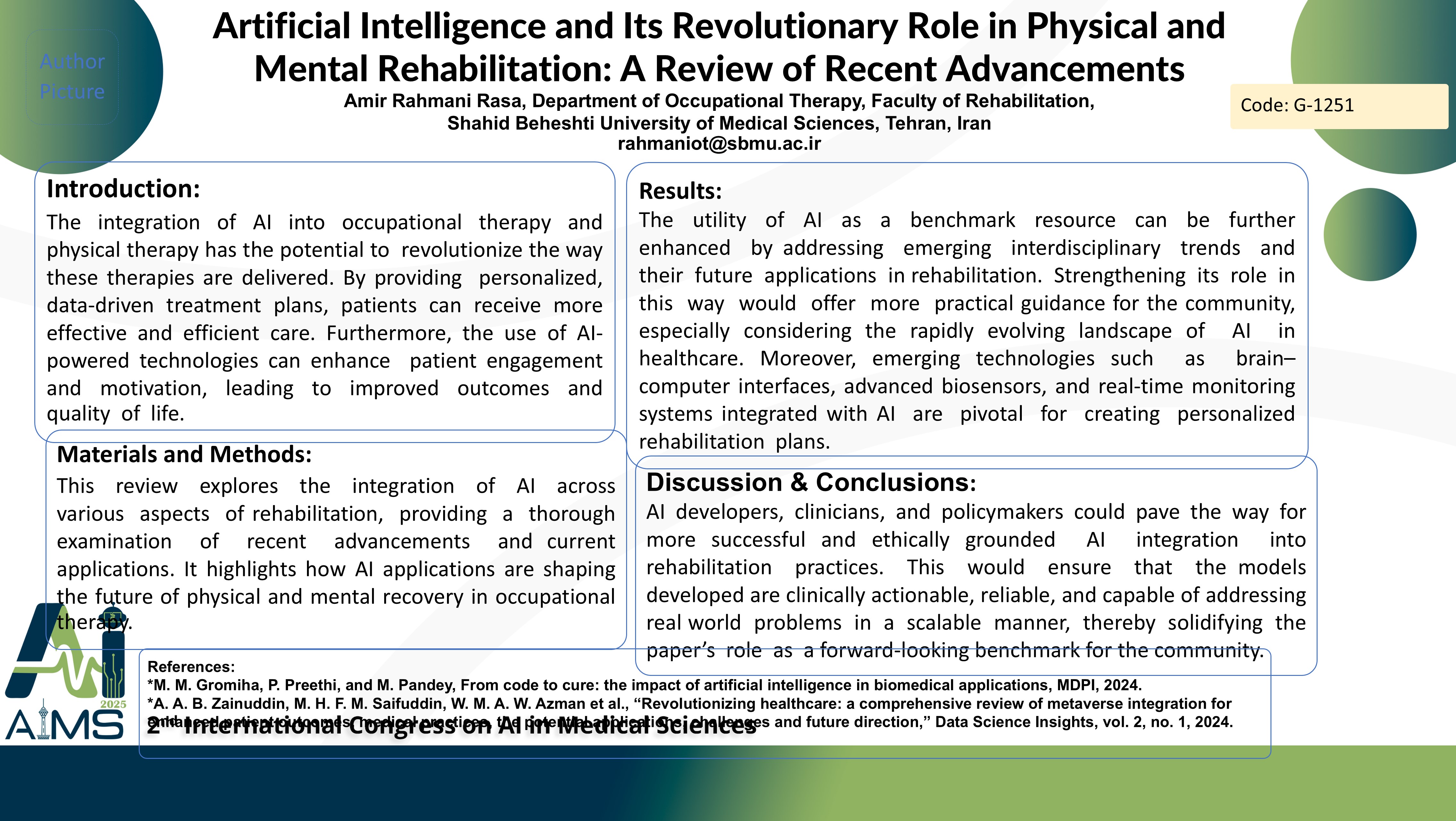هوش مصنوعی و نقش تحولی آن در توانبخشی جسمانی و روانی: مروری (سیستماتیک) بر پیشرفت های اخیر
کد: G-1251
نویسندگان: Amir Rahmani Rasa * ℗
زمان بندی: زمان بندی نشده!
برچسب: رباتیک در جراحی و مراقبت سلامت
دانلود: دانلود پوستر
خلاصه مقاله:
خلاصه مقاله
Background and aims: The integration of AI into occupational therapy and physical therapy has the potential to revolutionize the way these therapies are delivered. By providing personalized, data-driven treatment plans, patients can receive more effective and efficient care. Furthermore, the use of AI-powered technologies can enhance patient engagement and motivation, leading to improved outcomes and quality of life. Hence, the aim of the present review is to explore the novel and futuristic applications of AI in rehabilitation, and more specifically occupational therapy. Method: This review explores the integration of AI across various aspects of rehabilitation, providing a thorough examination of recent advancements and current applications. It highlights how AI applications, such as natural language processing, computer vision, virtual reality, machine learning, and robotics, are shaping the future of physical and mental recovery in occupational therapy. Results: The utility of AI as a benchmark resource can be further enhanced by addressing emerging interdisciplinary trends and their future applications in rehabilitation. Strengthening its role in this way would offer more practical guidance for the community, especially considering the rapidly evolving landscape of AI in healthcare. Moreover, emerging technologies such as brain–computer interfaces, advanced biosensors, and real-time monitoring systems integrated with AI are pivotal for creating personalized rehabilitation plans. Expanding the discussion to cover these interdisciplinary trends would help the community understand how AI-based rehabilitation models could be integrated into the growing ecosystem of digital health, allowing seamless data sharing and analysis across platforms. Conclusion: Focusing on potential collaborative opportunities between AI developers, clinicians, and policymakers could pave the way for more successful and ethically grounded AI integration into rehabilitation practices. This would ensure that the models developed are clinically actionable, reliable, and capable of addressing real world problems in a scalable manner, thereby solidifying the paper’s role as a forward-looking benchmark for the community.
کلمات کلیدی
Artificial Intelligence, Occupational Therapy, Physical Therapy
